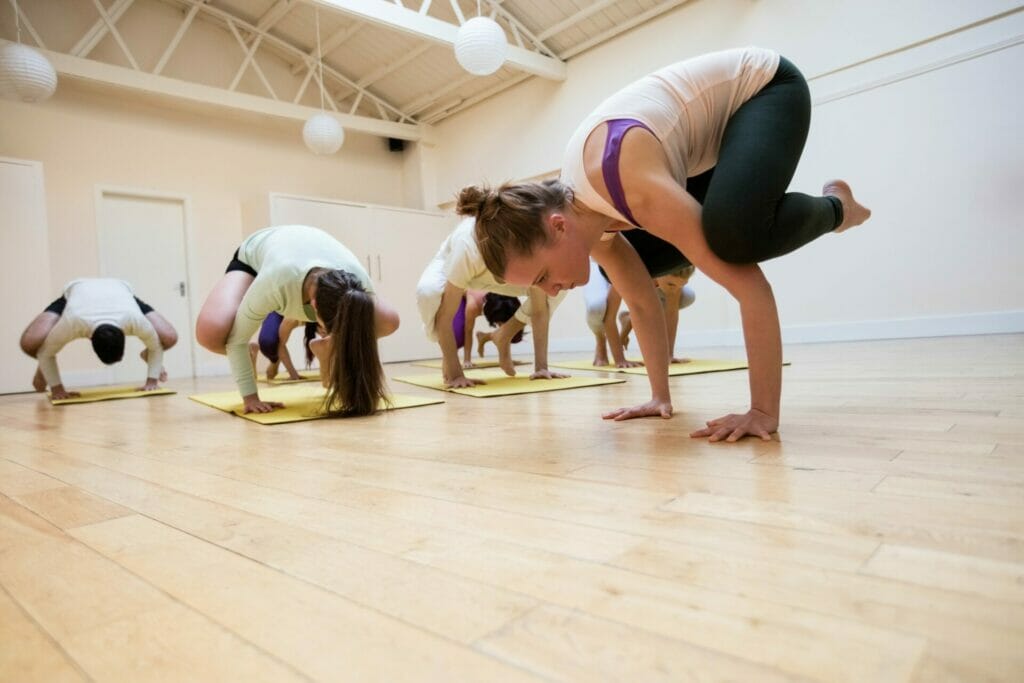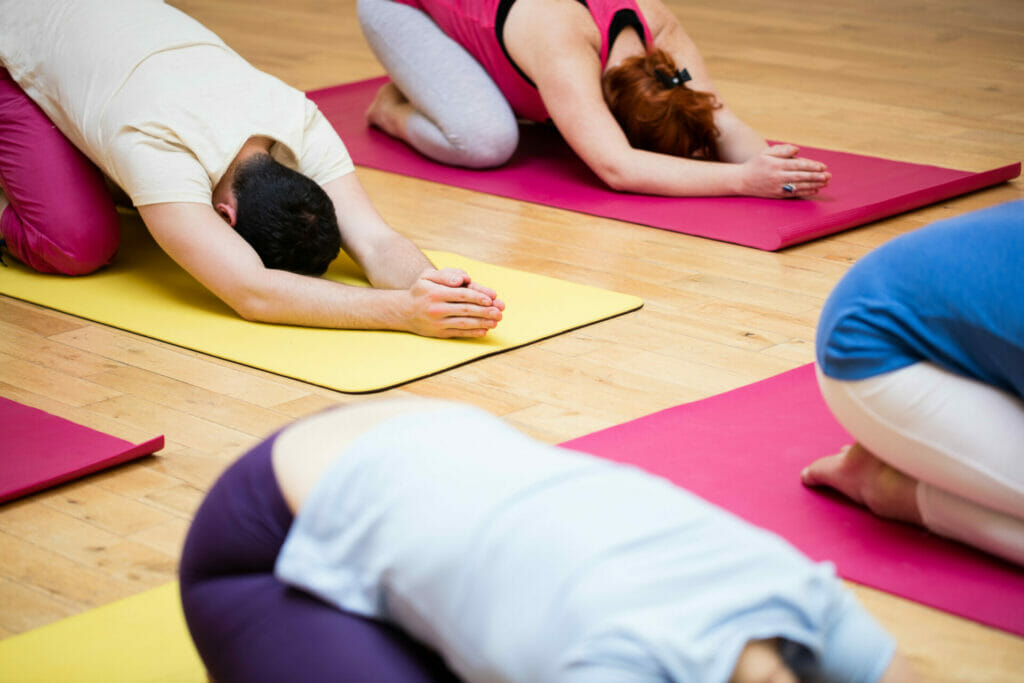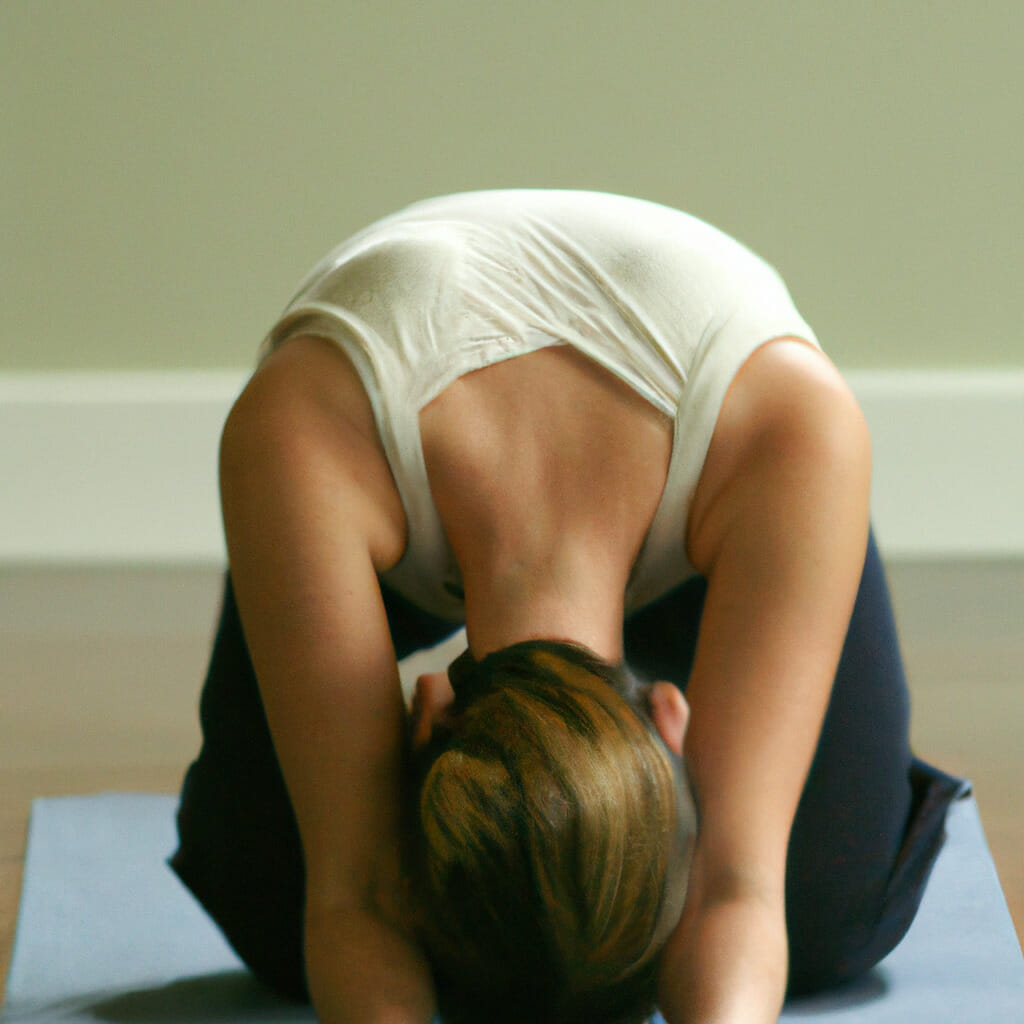Key Takeaways:
- Yoga is a holistic approach to addiction recovery, promoting physical and mental well-being as well as self-discovery and awareness. Practicing yoga can enhance overall well-being and help manage stress and anxiety.
- By harnessing the power of the breath with pranayama, finding inner peace with meditation, and unleashing inner strength with asana poses, individuals in addiction recovery can develop practical techniques to manage cravings, emotions, and triggers.
- Yoga’s enduring positive impact on addiction recovery is a testament to its ability to promote self-care and mindfulness, and serves as an important tool in developing a sustainable and healthy lifestyle in recovery.
Take the first step in your journey to a healthier life with yoga. You can reduce addiction-related stress, mental exhaustion, and pain with this holistic approach. Yoga offers a calm and peaceful environment to accompany the right attitude, allowing you to take control of your recovery.
Yoga for Addiction Recovery: A Comprehensive Guide
As a person in addiction recovery myself, I know firsthand how challenging it can be to find effective tools for healing. That’s why I’m excited to introduce this comprehensive guide to Yoga for Addiction Recovery.

Defining the Art of Yoga
Firstly, Yoga is not just any exercise routine; it is more like a lifestyle that encompasses various practices such as meditation, breathing exercises, physical poses (asanas), and ethical principles (yamas and niyamas).
Secondly, the word ‘yoga’ means ‘to unite,’ which in essence means to unite one’s mind, body, and soul.
Finally, yoga has several styles or forms such as Hatha yoga (the most popular form involving physical postures) or Bhakti yoga (devotion-based practice).
Defining the Art of Yoga further embodies various rare aspects of this practice – the use of mantras and mudras for channeling energy within oneself or for invoking spiritual energies. It discusses chakras or energy centers in our body that can be activated through yogic practices to achieve balance in life. Moreover, it talks about how certain diet restrictions have been prescribed for specific types of yogic practices.
If you want to experience inner peace while enhancing your physical health through mindful movements and breathing exercises then practicing yoga does wonders. Don t let your fear hold you back from experiencing its transformative effects on individuals physically healing their bodies.
Tracing the Roots of Yoga
For thousands of years, there have been accounts of the enhanced states of enlightenment and mindfulness obtainable via yoga meditation. Understanding the origins and history of this ancient practice is essential in fully comprehending its significance in modern times.
Yoga has been practiced for thousands of years and originated in ancient India. The word “yoga” signifies union or connection, pointing towards its traditional goal of unifying body and mind. Through physical postures (asanas), breath control (pranayama), and meditation (dhyana), Yoga aims to harmonize our physical, mental, and spiritual dimensions.
Yoga was developed as a holistic approach to life one that emphasizes balance between opposing forces like light and dark, hot and cold, active and passive. By balancing these forces within ourselves, we attain harmony both within ourselves and with nature. This explains why Yoga is often referred to as a science of well-being rather than just a physical practice.
Furthermore, through the ages, different philosophies influenced the development of Yoga. The early Yogis were primarily concerned with attaining Self-realization or enlightenment. Later on, various schools emerged that focused on developing different aspects like hatha yoga (physical strength), bhakti yoga (devotion), karma yoga (action), and jnana yoga (knowledge). However, all schools maintained the ultimate goal of unification between body and mind.
Tracing the Roots of Yoga also reveals many interesting facts about its evolution over time. For instance: did you know that Yoga was initially an oral tradition? Or that Sage Patanjali codified the ‘Eight Limbs’ system – considered as one of the foundational texts on Yoga? These details help us appreciate how much history goes behind each posture we perform today.
For instance: During our time researching Introducing Yoga for Addiction Recovery: A Comprehensive Guide (The Benefits of Yoga in Addiction Recovery), we came across a fascinating story. A young man who had been struggling with addiction for years found solace and healing through Yoga. His addiction had led him to an unhealthy lifestyle, which ultimately endangered his life. After much persuasion, he agreed to join a Yoga class as part of his treatment program. Initially reluctant and resistant, he soon realized that the practice was not just about physical exercise but was also helping him connect with himself on a deeper level – something he had ignored in his addiction trance. Gradually, Yoga created a bridge for him to reconnect with his body, mind, and soul, and helped him stay clean.
The Benefits of Yoga in Addiction Recovery: A Holistic Approach
As a recovering addict, I know how important it is to find the right tools to stay clean and sober. That’s why I’m excited to share with you the incredible benefits of yoga in addiction recovery – a holistic approach that addresses not just the physical symptoms of addiction, but also the underlying mental and emotional issues that contribute to addictive behaviors.

Enhancing Physical Well-being with Yoga
“Yoga in the management of drug dependence has been an intriguing area of interest since the last decade. Yoga is being considered as a holistic intervention inducing dopamine homeostasis leading to long-term benefits in management of addictive behaviors termed as ‘Reward Deficiency Syndrome.'” (Role of Yoga in Management of Substance-use Disorders: A Narrative Review, Kuppili et al., 2018.) As an ancient practice from India that involves physical exercises, breathing techniques, and meditation. This combination helps to enhance flexibility, strength, balance, endurance, and peace of mind.
Yoga works by activating the parasympathetic nervous system, which helps the body to relax and de-stress. It also helps in reducing cortisol levels in the body which is responsible for stress. The gentle movements involved in yoga are not only beneficial for physical health but also for mental and emotional well-being.
Studies have shown that regular yoga practice can improve cardiovascular health, reduce inflammation in the body, improve sleep quality, relieve pain and stiffness in muscles and joints, and strengthen immune function and the digestion process.
Yoga is also known to have helped patients recover from addiction because it alleviates symptoms of anxiety, depression, craving, or impulsivity, while improving mood states & self-esteem significantly.
Interestingly enough before Western world embracement; Yoga was only taught within Indian mythology texts as a means of both attaining spiritual enlightenment & cleansing oneself.
With increased scientific validation, #MentalHealthAwareness has risen exponentially because according to ancient sages who meditated regularly on this subject – “When our mind expands our consciousness follows suit“. So keeping calm can produce great results!
Boosting Mental Health with Yoga
Boosting Mental Health with Yoga is an effective way of maintaining a healthy mind and body. Yoga has been scientifically proven to enhance mental health by reducing stress, managing anxiety, and helping with depression. The combination of physical activity, mindfulness, and breathing techniques in yoga makes it a powerful tool for improving mental health.
The four main ways that yoga helps in boosting mental health are by reducing stress levels, managing anxiety disorders, providing relief from depression symptoms, and promoting better sleep quality. Yoga is known to activate the parasympathetic nervous system which helps in relaxation, and reduces stress levels by lowering cortisol secretion while releasing endorphins to elevate mood levels effectively.
Yoga exercises not only improve physical strength but also benefits mental well-being tremendously. Yoga asanas can help improve posture and balance while creating good body awareness. Breathing techniques like Pranayama practiced during Yoga can relieve anxiety disorders or panic attacks by stimulating the parasympathetic nervous system or ‘rest-and-digest’ response, thereby calming the mind and bringing peace within oneself.
Studies reveal that practicing yoga regularly can alleviate symptoms of depression by relieving stress hormones and raising gamma-aminobutyric acid (GABA) levels. This practice increases serotonin activity hence resulting in overall happiness levels increase. With its ability to calm your mind and promote inner peace, it improves sleep quality and thus plays a role in reducing Insomnia.
If you want to boost mental health with yoga, enroll yourself in a nearby class & start today! Boost your self-esteem with confidence while achieving your physical potential goals at the same time because why not? Life is too short to be stressed anyway!
Promoting Self-discovery and Awareness with Yoga
Promoting Self-Discovery and Awareness with Yoga is a powerful tool for individuals looking to explore themselves more deeply. Through the art of Yoga, it opens up channels of self-awareness that allow one to gain a better understanding of themselves and their surroundings. The following are five ways Yoga can promote self-discovery and awareness:
- Firstly, Yoga enables one to connect the mind, body, and spirit in a harmonious way that promotes mindfulness.
- Secondly, it fosters better breathing techniques that help regulate emotions and calm the mind.
- Thirdly, it is an effective stress reliever; stressing less allows us to focus more on our personal growth.
- Fourthly, practicing yoga creates room for expanded consciousness and intuition through meditation practices.
- Finally, it provides a safe space for vulnerable exploration without judgment or comparison.
In essence, promoting self-discovery and awareness in yoga requires being present within ourselves while mindfully engaging with each moment as they arise. In contrast to external distractions or activities that commonly disengage us from our inner selves.
Interestingly enough, the field of addiction studies has found that promoting self-discovery and awareness through Yoga could be beneficial in addiction recovery programs due to its transformative power in mediating emotional regulation which ultimately reduces susceptibility to relapse.
If we look at the ancient roots of Yoga history, it was created as a vehicle for understanding oneself deeper for thousands of years – long before science began questioning its potent psychological benefits.
Yoga Techniques for Addiction Recovery: Practical Tips to Get Started
Yoga is a powerful practice that has been integrated into many addiction recovery programs. Its ability to help individuals cope with stress, anxiety, and other triggers of addiction has made it a popular choice.
In this section, I want to share with you some practical tips on how to get started with yoga techniques for addiction recovery. We will discuss three main areas of focus:
- Harnessing the power of the breath with pranayama
- Finding inner peace with meditation
- Unleashing inner strength with asana poses
Whether you are new to yoga or an experienced practitioner, these techniques can be an effective tool to support your addiction recovery journey.

Image credits: www.lantanarecovery.com by Joel Jones
Harnessing the Power of the Breath with Pranayama
Breathing is an essential function of our body, but did you know that it can also be harnessed for better physical and mental health? This is where the power of Pranayama comes in.
Pranayama is a breathing technique used in yoga to control the energy flow within the body. It works by regulating the inhale, exhale, and retention of breath. When done regularly, Pranayama can help reduce stress, anxiety, and depression while improving overall well-being.
One of the reasons Pranayama works so effectively is due to its connection with our parasympathetic nervous system. Deep breathing stimulates this part of our nervous system, which induces a relaxation response in our body.
Interestingly, certain types of Pranayama have been shown to increase brain activity in areas associated with attention and focus. Other studies suggest that practicing these techniques may even improve respiratory function and cardiovascular health.
While there are many different styles of Pranayama out there, some popular ones include Kapalbhati (rapid exhales through the nose), Nadi Shodhana (alternate nostril breathing), and Bhramari (humming bee breath).
A true story from yoga lore tells of a man who was able to survive underwater for several hours thanks to his mastery of breath control through Pranayama. While such feats are incredibly rare and extreme cases, they showcase just how powerful harnessing our breath can be.
Finding Inner Peace with Meditation
In this article, we will explore the concept of finding inner peace through meditation. Meditation is a practice that has been around for thousands of years and has been known to help people achieve a sense of calmness and inner peace. Here, we will provide a 3-step guide on how to effectively use meditation to find your inner peace.
The first step to finding inner peace with meditation is to find a quiet and peaceful place where you can sit or lie down comfortably. This could be in your room, in nature or even on the beach. The idea is to create an environment where you can let go of any distractions and focus solely on meditating.
Before you start meditating, it’s important to set an intention for what you want to accomplish through it. Your intention should be something positive and specific like ‘I want to feel more relaxed‘ or ‘I want to let go of negative thoughts‘. By having a clear intention in mind, you will have a better chance of achieving what you set out to do.
Once you’re comfortable in your chosen peaceful location with your intention clear in mind, begin focusing on your breath. Simply focus on the sensation of air passing through your nostrils as you inhale and exhale deeply. As thoughts come up, acknowledge them but do not engage with them – simply let them drift away as if they were clouds passing by.
Finding inner peace with meditation isn’t only about relaxation; it can also improve our mental health by reducing symptoms of anxiety, depression, and stress disorders. In addition, meditation has been shown to increase self-awareness which can lead us toward a deeper understanding of ourselves.
I remember when I began suffering from anxiety attacks – I found myself completely uncertain about what caused them or how I could alleviate their distressful symptoms without medication. It wasn’t until a yoga teacher introduced me to meditation that I learned how to manage my anxiety. Through consistent practice, I found that it was possible to identify and control my thoughts and feelings, find a state of inner peace, and live with my anxiety symptoms without feeling overwhelmed.
With the benefits of meditation being well documented, it’s no surprise that many people are turning to this practice to find their inner peace.
Unleashing Inner Strength with Asana Poses
“Unleashing Inner Strength with Asana Poses” refers to the capability of yoga poses or asanas to help individuals in addiction recovery to tap into their inner reserves of strength. By practicing asanas, one can effectively access deeper layers of being and unlock hidden wells of resilience and courage.
This can be attributed to the holistic nature of yoga, which encompasses not just physical exercise but also mental and emotional well-being. Through regular practice, individuals can develop a greater awareness of their body and mind, which can help them overcome negative emotions and thought patterns.
Moreover, certain asanas are specifically designed to boost confidence, courage, and inner strength. For instance, warrior poses like Virabhadrasana I & II explicitly cultivate qualities such as determination and fortitude. Similarly, inversions like headstands or handstands require a high degree of concentration and focus that directly impacts one’s level of inner strength.
It is vital to note that the effects of asanas on one’s inner strength may not manifest immediately but rather over time. Therefore patience and commitment are crucial for experiencing long-term improvement in personal resilience.
Interestingly enough, the concept of ‘inner strength’ manifests throughout the history of yoga – from ancient texts like Patanjali’s Yoga Sutras (which includes several sutras about cultivating willpower) to modern research studies that demonstrate yoga’s effectiveness in promoting emotional regulation.
So keep practicing your asanas with intention while you unleash your inner warriors!
Recap of the Benefits of Yoga for Addiction Recovery
Yoga is a powerful tool for addiction recovery, providing physical and mental benefits that can help individuals overcome their struggles with addiction. In this article, we will provide a recap of the benefits of yoga for addiction recovery.
Firstly, yoga helps to relieve stress and anxiety, two major triggers for addiction. By practicing yoga regularly, individuals can learn to manage their emotions better and cope with the challenges of life in a healthier way.
Secondly, yoga encourages mindfulness and awareness, which can help individuals stay focused on their goals and avoid relapse. Through greater self-awareness, individuals can identify and address underlying issues that may contribute to their addiction.
Thirdly, yoga is a great way to improve physical health and flexibility. Regular practice can help to strengthen muscles and increase endurance, making it easier to engage in other physical activities that promote overall well-being.
To add to the benefits of yoga in addiction recovery, incorporating regular exercise into your routine can also be incredibly helpful. Not only does exercise release endorphins and improve mood, but it can also aid in reducing stress and anxiety. Check out more about the benefits of exercise in addiction recovery. Finally, yoga provides a sense of community and support that can be incredibly beneficial for those in recovery. By participating in group classes or workshops, individuals can connect with others who are also on the path toward recovery and cultivate positive relationships that will help them sustain their progress over time.
It’s worth noting that while the benefits of yoga are significant for those struggling with addiction, it’s important to remember that yoga should be used as part of a comprehensive treatment plan that includes therapy, medication management if necessary, dietary changes, exercise routines (in addition to yoga), supportive relationships/living conditions/environmental change, etc., depending upon individual needs and circumstances.
I recently met someone who has been in recovery from addiction for six years now. When I asked him how he managed to stay sober all these years after going through rehab more than once without lasting success he said “Yoga saved my life“. He shared that it was his daily morning routine combined with attending regular studio classes at his local Yoga studio where he found balance both physically & mentally while surrounding himself in an atmosphere filled with positivity & understanding people. According to him, the breathing techniques he learned helped him remain calm in moments of crisis and overcome his triggers in a more effective way. He said that his yoga practice became more important than drinking ever was and that it empowered him with the self-confidence and strength to keep on going with his journey of recovery. Yoga not only became a healthy coping mechanism for this individual but also helped him take control over his life again. He now spends much of his time teaching yoga classes & is inspired to help others looking to get back on their feet after addiction struggles – this story showcases just how powerful the effects of yoga can be when used during addiction recovery.
Emphasizing the Importance of Yoga in Addiction Recovery
Emphasizing the Importance of Yoga in Addiction Recovery
The use of yoga as a complementary therapy to addiction recovery has been gaining popularity over the years. It is now widely accepted that yoga can be an essential tool for individuals seeking lasting recovery from addiction. The importance of yoga in addiction recovery cannot be overstated, as a regular practice can significantly improve physical, emotional, and mental health.
Yoga works through the combination of physical postures, breathing exercises, and mindfulness techniques. The physical postures help to release endorphins in the body which aid in reducing stress levels and promoting relaxation. These techniques also help individuals connect with their bodies, and this awareness can significantly aid addiction recovery.
Another reason why yoga is becoming increasingly important in addiction recovery is that it targets various aspects of addiction such as cravings, mental obsession, and anxiety. With regular practice, individuals can learn how to cope effectively with these symptoms without relying on drugs or alcohol. Furthermore, yoga promotes self-awareness and self-acceptance which are crucial components in maintaining sobriety.
Studies have found that practicing yoga regularly can improve sleep patterns, reduce depression symptoms, enhance cognitive functioning, and increase positive emotions. These benefits are incredibly valuable for individuals recovering from drug or alcohol addiction who may experience insomnia, depression, or impaired thinking skills.
If you are considering using yoga as a complementary therapy to your addiction recovery journey, there are some suggestions I would like to offer. Firstly, find an experienced teacher who understands how to work with individuals with substance abuse issues. Secondly, practice regularly even when you don’t feel like it as consistency is key. Finally, let go of any expectations you may have about your practice and allow yourself to experience the present moment fully.
Five Facts About The Benefits of Yoga in Addiction Recovery:
- Yoga can help reduce stress and anxiety, which are often triggers for addiction. (Source: Yoga Journal)
- Practicing yoga can increase dopamine and endorphin levels in the brain, reducing cravings for drugs and alcohol. (Source: Verywell Mind)
- Yoga can improve sleep quality, which is crucial for recovering from addiction. (Source: Harvard Health Blog)
- Practicing yoga can improve overall physical health and well-being, promoting a more holistic approach to recovery. (Source: Psychology Today)
- Yoga can serve as a healthy coping mechanism and replace negative habits and behaviors. (Source: American Addiction Centers)
FAQs about The Benefits Of Yoga In Addiction Recovery
What are the benefits of yoga in addiction recovery?
Yoga offers numerous benefits for those in addiction recovery. It can help reduce stress, anxiety, and depression, increase self-awareness, and improve physical health. Additionally, practicing yoga can teach individuals how to calm their minds and focus on the present moment.
How does yoga help with addiction recovery?
Yoga can help with addiction recovery by providing tools and techniques to manage stress and negative emotions, improve physical health, and enhance overall well-being. Through the practice of yoga, individuals can build self-awareness and develop healthy coping mechanisms.
What types of yoga are beneficial for addiction recovery?
Several types of yoga can be beneficial for addiction recovery, including Hatha, Vinyasa, Restorative, and Kundalini yoga. It’s important to find the type of yoga that works best for an individual’s needs and preferences.
Can beginners practice yoga in addiction recovery?
Absolutely! Beginners practice yoga in addiction recovery. Yoga is for everyone, regardless of experience level. Beginners can start with gentle yoga classes and work their way up to more advanced practices as they feel ready.
Should yoga be used as the sole treatment for addiction recovery?
No, yoga should not be used as the sole treatment for addiction recovery. It can be a valuable component of a comprehensive treatment plan that includes therapy, support groups, and other forms of treatment.
How can I incorporate yoga into my addiction recovery plan?
You can incorporate yoga into your addiction recovery plan by finding a yoga studio or teacher in your area, practicing at home with online videos or books, or attending a yoga retreat. It’s important to consult with a healthcare professional before incorporating any new practices into your treatment plan.








